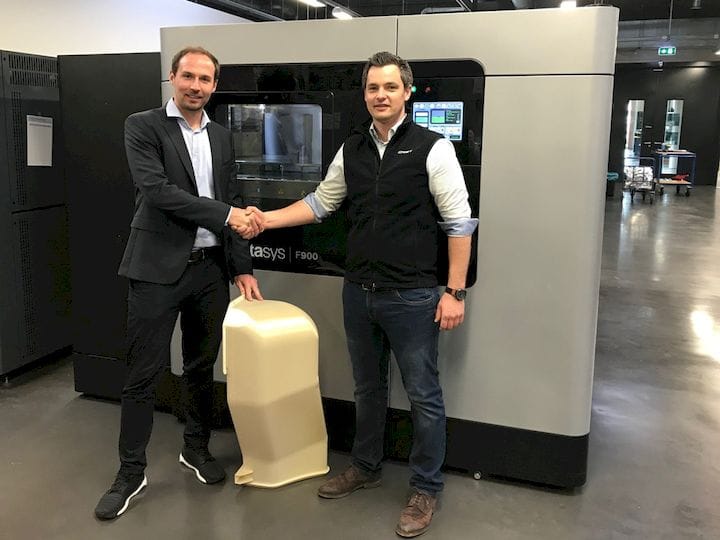![Stratasys signs a deal with Bombardier Transportation [Source: Railway Gazette]](https://fabbaloo.com/wp-content/uploads/2020/05/image-asset_img_5eb095f0aa5e2.jpg)
Rail companies are using 3D printed parts, suggesting a new digital inventory strategy by Stratasys is working.
The Railway Gazette reports:
”Bombardier Transportation is to install a Stratasys F900 3D printer at its Hennigsdorf plant. Purchased through Stratasys’ regional distributor Alphacam, the printer will use ULTEM 9085 resin to produce components previously made from glass fibre or tin.
Bombardier intends to use the printer to produce interior and exterior rolling stock parts — including air ducts, housings and cable holders — as well as tools and prototypes. The parts will be used on trains and trams that Bombardier produces for Germany, Austria and Switzerland.
Stratasys says that additive manufacturing will allow its customers to customise part production, reduce inventory for spare parts and increase flexibility.”
The last paragraph is the giveaway: “spare parts”. This implementation thus appears to be a digital inventory strategy by Bombardier.
Digital inventory is a concept we believe Stratasys has been working on for some time. The concept is straightforward, but enormous in impact. To understand the benefits of digital inventory, you must first understand how parts are manufactured for an industry, in this case, rail.
Warehouses of Spare Parts
Railcars, once deployed, might be in service for decades. And of course, while they are in use they may incur damage and require spare parts. In a traditional manufacturing scenario the railway would order a quantity of spare parts from the manufacturer in advance. They did this because the manufacturer would have tooled up their production line and producing extra parts is no big deal.
But if a spare part were requested years later, it might require tooling up again, which could be prohibitively expensive. So the spare parts are typically made in advance and warehoused until needed.
But this is incredibly expensive. Parts would occupy space in storage for decades, and possibly never be used. They would have to be indexed, supervised and quality checked. And don’t forget this must be done for each and every version of every railcar that’s in service, likely dozens or even hundreds of car types and thousands of parts.
Digital Inventory Benefits
All of this is dramatically expensive, but can be vastly simplified with digital inventory.
Instead of pre-making all the spare parts, the idea is to simply store the digital 3D model for each part. Then, when the part is required for a repair, you simply print it on demand. No storage necessary!
Changing to alternative equipment or materials would require an expensive recertification process that would be unnecessary and likely financially prohibitive compared to “just printing another one”.
Stratasys Strategy
For Stratasys, this is an ideal strategy for several reasons.
The parts must be certified for use, as the application is a regulated industry. This means that the certification process, once done, is not required when a spare part is 3D printed later. That happens because — and this is the key part — the part is produced on exactly the same machine with the same materials using the same print parameters. It’s literally — and legally — the same part.
The result of this is that the companies using this digital inventory strategy are effectively tied to Stratasys equipment and materials for, well, decades. That provides a guaranteed, high-volume revenue stream for Stratasys for the long term, something any company would dream of having.
Once the concept is established at a few organizations, then others in similar positions will strongly consider Stratasys’ solution, which no doubt will increase in capability as time passes.
The patents that allowed Stratasys to form and grow are now long expired and the company faces fleets of competitors now marketing similar equipment, often at lower costs. The digital inventory strategy is in a space that few, if any, of these competitors could address.
If Stratasys can make this work, then their long-term success is effectively guaranteed.
Via Railway Gazette











